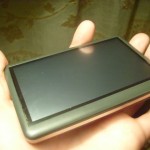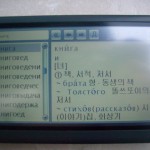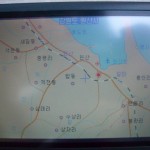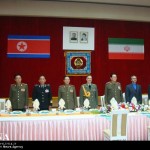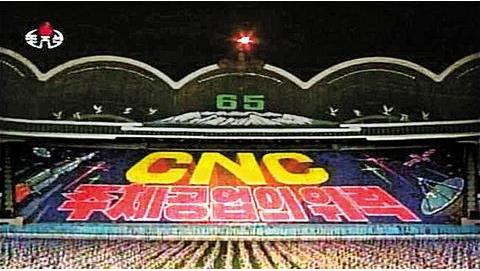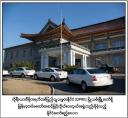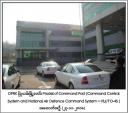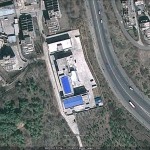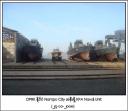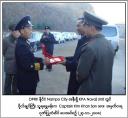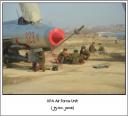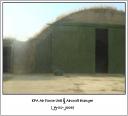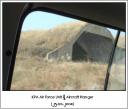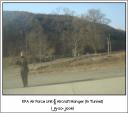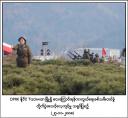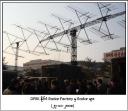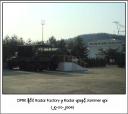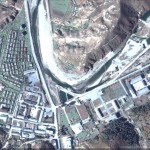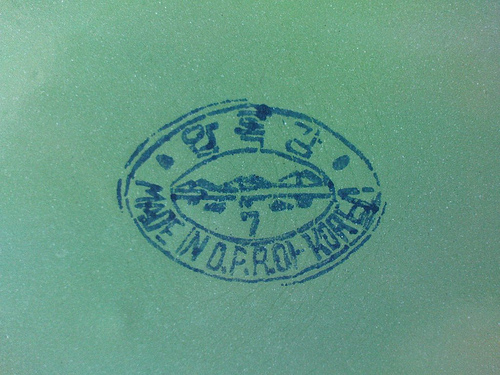UPDATE 4: The following statement appeared on the Treasury Department web page:
In joint actions, the U.S. Departments of Treasury and State today announced the designations of five North Korean entities and three individuals under Executive Order (E.O.) 13382 for supporting North Korea’s Weapons of Mass Destruction (WMD) program. Executive Order 13382 is an authority aimed at freezing the assets of WMD proliferators and their supporters thereby isolating them from the U.S. financial and commercial systems.
Also today, President Obama signed an Executive Order that directs the Secretary of the Treasury, in consultation with the Secretary of State, to target for sanctions individuals and entities facilitating North Korean trafficking in arms and related materiel; procurement of luxury goods; and engagement in illicit activities, including money laundering, the counterfeiting of goods and currency, bulk cash smuggling and narcotics trafficking. The new Executive Order supplements E.O 13382, under which North Korean entities have been designated to date, and is consistent with measures required in UNSCRs 1718 and 1874.
The following individuals have been added to OFAC’s SDN list:
KIM, Yong Chol (a.k.a. KIM, Yong-Chol; a.k.a. KIM, Young-Cheol; a.k.a. KIM, Young-Chol; a.k.a. KIM, Young-Chul); DOB circa 1947; alt. DOB circa 1946; POB Pyongan-Pukto, North Korea (individual) [DPRK]
RI, Hong-Sop, c/o General Bureau of Atomic Energy , Haeudong, Pyongchen District, Pyongyang, Korea, North; DOB 1940; nationality Korea, North (individual) [NPWMD]
RI, Je-Son (a.k.a. RI, Che-Son), c/o General Bureau of Atomic Energy, Haeudong, Pyongchen District, Pyongyang, Korea, North; DOB 1938; nationality Korea, North (individual) [NPWMD]
YUN, Ho-Jin (a.k.a. YUN, Ho-Chin), c/o Namchongang Trading Corporation, Pyongyang, Korea, North; DOB 13 Oct 1944; nationality Korea, North (individual) [NPWMD]
The following entities have been added to OFAC’s SDN list:
GREEN PINE ASSOCIATED CORPORATION (a.k.a. CHONGSONG YONHAP; a.k.a. CH’O’NGSONG YO’NHAP), Nungrado, Pyongyang, Korea, North; c/o Reconnaissance General Bureau Headquarters, Hyongjesan-Guyok, Pyongyang, Korea, North [DPRK]
KOREA HEUNGJIN TRADING COMPANY (a.k.a. HUNJIN TRADING CO.), Pyongyang, Korea, North [NPWMD]
KOREA TAESONG TRADING COMPANY, Pyongyang, Korea, North [NPWMD]
MUNITIONS INDUSTRY DEPARTMENT (a.k.a. MILITARY SUPPLIES INDUSTRY DEPARTMENT), Pyongyang, Korea,
North [NPWMD]
OFFICE 39 (a.k.a. BUREAU 39; a.k.a. CENTRAL COMMITTEE BUREAU 39; a.k.a. DIVISION 39; a.k.a. OFFICE #39; a.k.a. OFFICE NO. 39; a.k.a. THIRD FLOOR), Second KWP Government Building (Korean – Ch’o’ngsa), Chungso’ng, Urban Town (Korean – Dong), Chung Ward, Pyongyang, Korea, North; Chung-Guyok (Central District), Sosong Street, Kyongrim-Dong, Pyongyang, Korea, North; Changgwang Street, Pyongyang, Korea, North [DPRK]
RECONNAISSANCE GENERAL BUREAU (a.k.a. CHONGCH’AL CH’ONGGUK; a.k.a. KPA UNIT 586; a.k.a. “RGB”), Hyongjesan-Guyok, Pyongyang, Korea, North; Nungrado, Pyongyang, Korea, North [DPRK]
SECOND ACADEMY OF NATURAL SCIENCES (a.k.a. 2ND ACADEMY OF NATURAL SCIENCES; a.k.a. ACADEMY OF NATURAL SCIENCES; a.k.a. CHAYON KWAHAK-WON; a.k.a. CHE 2 CHAYON KWAHAK-WON; a.k.a. KUKPANG KWAHAK-WON; a.k.a. NATIONAL DEFENSE ACADEMY; a.k.a. SANSRI; a.k.a. SECOND ACADEMY OF NATURAL SCIENCES RESEARCH INSTITUTE), Pyongyang, Korea, North [NPWMD]
SECOND ECONOMIC COMMITTEE, Kangdong, Korea, North [NPWMD]
UPDATE 3: According to the Wall Street Journal:
The Obama administration outlined new financial sanctions on North Korea aimed at further choking off Pyongyang’s arms trade and the illicit businesses funding dictator Kim Jong Il’s government.
The U.S. specifically targeted a secretive unit of Pyongyang’s ruling Korean Workers’ Party, known as Office 39, which American officials believe serves as a private slush fund for Mr. Kim.
Washington also blacklisted nearly a dozen North Korean individuals and entities alleged to be overseeing Pyongyang’s development of conventional arms and weapons of mass destruction, as well as their sales to third countries.
Among those designated are the Second Economic Committee of the Workers’ Party and Yun Ho-jin, Pyongyang’s onetime ambassador to the United Nations’ nuclear watchdog, the International Atomic Energy Agency. The U.S. also named to its sanctions list two top officials from Pyongyang’s General Bureau of Atomic Energy, Ri Je-son and Ri Hong-sop.
“When it comes to focusing on illicit activity, we have seen that the world reacts to this kind of thing very, very positively,” said Stuart Levey, the Treasury Department’s undersecretary for terrorism and financial intelligence. “We believe that this sort of program can have a very powerful impact.”
The new U.S. measures freeze any assets of the designated persons or entities inside the U.S. and bars American companies from conducting business with the listed North Koreans. Mr. Levey also said that any foreign entities conducting business with the sanctioned North Koreans could also face U.S. penalties.
Secretary of State Hillary Clinton announced in June that the U.S. would enact new financial penalties on Pyongyang, in part, in response to the North’s alleged torpedoing of a South Korean naval vessel. The March sinking of the Cheonan killed 46 South Korean servicemen and has led to heightened tensions on the Korean peninsula.
U.S. officials fear the attack could be linked to a political succession process inside Pyongyang and could presage other provocative acts by the North. U.S. and Asian officials believe Kim Jong Il is seeking to pass power to his third son, Kim Jong Eun.
…U.S. officials said the targeting of Office 39 is among the most direct assaults on Kim Jong Il’s finances to date and illustrates Washington’s support for the North Korean people. Office 39 has been directly involved in procuring luxury goods for Mr. Kim and Pyongyang’s political elite, even as many North Koreans face starvation.
Office 39 was blacklisted under a new executive order signed by President Barack Obama on Monday that specifically seeks to end North Korea’s ability to raise hard currency through illicit activities like drug smuggling and counterfeit $100 bills. The Treasury said Office 39 was directly involved in a 2009 scheme to illegally export into North Korea two luxury yachts valued at $15 million for Kim Jong Il.
UPDATE 2: According to the Wall Street Journal:
A North Korean arms chief and Pyongyang’s former ambassador to the United Nation’s nuclear agency have emerged as key figures in an intensifying international effort to curb North Korea’s weapons-trading activities.
The global dealings of the two men, Chun Byung-ho and Yun Ho-jin, whom North Korea analysts believe to be related through marriage, date back to the 1980s. They have played leading roles in North Korea’s development and testing of atomic weapons, according to current and former U.S. officials, Asian intelligence analysts and U.N. nonproliferation staffers.
More troubling to officials, Messrs. Chun and Yun also oversee Pyongyang’s vast arms-trading network, which appears to be spreading. They have shipped components for long-range missiles, nuclear reactors and conventional arms to countries including Iran, Syria and Myanmar.
On Monday, the Obama administration announced economic sanctions against various individuals and entities involved in Pyongyang’s nuclear work and in alleged illicit trading activities. The Treasury Department named Mr. Yun and the North Korean body headed by Mr. Chun—the Second Economic Committee of Pyongyang’s ruling Korean Workers’ Party. The sanctions freeze any U.S. assets of those named and bar Americans from conducting business with them. Treasury also warned that foreign firms doing business with them risked sanctions.
The Second Economic Committee oversees a little-known foreign trade office with the Orwellian name of Office 99. The proceeds from the Office’s arms sales go directly to North Korean dictator Kim Jong Il and Pyongyang’s senior leadership, according to these officials and recent North Korean defectors.
“It is broadly believed that the Second Economic Committee…plays the largest and most prominent role in nuclear, other WMD and missile-related development programs, as well as arranging and conducting arms-related exports” for North Korea, says a report issued in May by the U.N. committee tasked with enforcing international sanctions on Pyongyang.
The U.S. and U.N. recently have intensified efforts to combat the Second Economic Committee and Office 99, alarmed by Pyongyang’s two nuclear-weapons tests and its alleged role in sinking a South Korean naval vessel in March. Last year, the U.N. formally sanctioned Mr. Yun and his arms company, Namchongang Trading Co.
North Korean arms shipments moving through Thailand, the United Arab Emirates, South Africa and the South China Sea have been seized or turned back by the U.S. and its allies over the past few years. A Japanese court convicted a Tokyo-based trading company in November of procuring military technologies for Pyongyang with the intent of shipping them to Myanmar.
Still, Messrs. Chun and Yun’s decades of experience in the weapons trade pose a challenge to an international community keen to disrupt Pyongyang’s proliferation activities, say U.S. and Asian officials. “There is no reason to assume that Chun and Yun won’t sell nuclear weapons,” says David Asher, a former Bush administration official who has tracked Pyongyang’s arms trade for a decade. “There needs to be an active effort to disrupt their WMD networks and drive them out of business now, before it’s too late.”
The two men have established a network of front companies in Asia, Europe and the Middle East and have partnered with Southeast Asian, Japanese and Taiwanese criminal syndicates to move cash and contraband, say U.S. officials. And Mr. Yun has used the political cover provided by Pyongyang’s closest ally, China, to openly conduct business in cities such as Beijing and Shenyang, drawing official rebukes from Washington.
North Korean diplomats at Pyongyang’s U.N. mission in New York did not respond to requests for comment. Messrs. Chun and Yun couldn’t be reached.
Current and former U.S. officials say North Korea’s operations resemble in both scale and tactics those of Pakistan’s Abdul Qadeer Khan—one of the most notorious arms dealers in recent years. U.S. officials fear that isolated North Korea, desperate for hard currency, could accelerate its arms exports in a bid to prop up Kim Jong Il’s finances.
Mr. Chun, now 84 years old, and his Second Economic Committee emerged as major global arms exporters in the 1980s, as North Korea shipped as much as $3 billion worth of rockets, pistols and submarines to Tehran during the eight-year Iran-Iraq war, say recent defectors and North Korea analysts.
Pyongyang assisted some communist and socialist countries militarily during the 1960s and 1970s, and provided fighter pilots to aid Egypt and Syria in their wars against Israel. But North Korea found a largely captive market in Iran, which faced a U.S.-led weapons embargo as the West threw its support behind Iraqi strongman Saddam Hussein.
One senior North Korean defector who worked in Pyongyang’s munitions industries says he was dispatched to Iran by the Second Economic Committee in 1987 with the task of constructing missile batteries on the Iranian island of Kish to help Tehran better control the movement of ships through the Straits of Hormuz.
His main interlocutor was Iran’s elite military unit, the Islamic Revolutionary Guard Corps. The former hydro-mechanic says camaraderie developed between his 100-man team and the Guard, despite their different backgrounds.
Mr. Chun’s control over the Second Economic Committee was tied to his close relationship with Pyongyang’s ruling Kim family, say defectors and North Korea experts. The Russian-trained bureaucrat served as a member of North Korean founder Kim Il Sung’s bodyguard unit. He rose up the ranks of the Korean Workers’ Party with the political support of Kim Jong Il, eventually securing a position on Pyongyang’s most powerful political body, the National Defense Commission.
North Korea’s high-level defector, Hwang Jang-yop, has identified Mr. Chun as the broker of a key barter trade in the 1990s with Pakistan that significantly advanced Pyongyang’s nuclear infrastructure. The agreement resulted in North Korea shipping parts for long-range missiles to Islamabad in exchange for A.Q. Khan sending centrifuge equipment used in producing nuclear fuel.
As Mr. Chun pushed forward North Korea’s nuclear program from Pyongyang, Mr. Yun, believed to be the husband of Mr. Chun’s second daughter, emerged as a key player in procuring technologies for the Second Economic Committee from Europe, according to U.S., U.N. and European officials.
Mr. Yun, 66, arrived in Vienna in 1985 as Pyongyang’s ambassador to the International Atomic Energy Agency. The English and German speaker led negotiations with the U.N. agency aimed at forging a nuclear-inspection agreement with North Korea, and he helped oversee a 1992 tour of his nation’s Yongbyon nuclear facility for Hans Blix, the IAEA’s then-managing director.
“Yun was dedicated to turning things around. I truly believe that,” says Willi Theis, who worked closely with Mr. Yun as the head of the IAEA’s safeguards unit overseeing North Korea. Mr. Theis is now retired.
Still, concerns grew inside the IAEA about Mr. Yun’s activities, as relations between Pyongyang and the international community deteriorated, according to IAEA officials.
In 1993, North Korea broke off talks with the IAEA over the agency’s demands for an inspection of the country’s nuclear operations, and the U.S. charged Pyongyang with secretly stockpiling plutonium for atomic weapons. The next year, the Clinton administration threatened to bomb the Yongbyon facility if North Korea didn’t explain where the plutonium had gone. Mr. Yun grew embittered with the diplomatic process and mistrustful of the U.S. and its allies, according to IAEA staff and journalists who met with him.
Mr. Theis says he spent hours discussing the process with Mr. Yun and pressed the Agency to remain engaged with Pyongyang. The West German-born nuclear inspector says he grew suspicious of Mr. Yun’s many trips to other European cities and his contacts with local companies. Mr. Yun even hinted to Mr. Theis that he might have no choice but to directly support North Korea’s nuclear-weapons programs if relations with the IAEA collapsed.
“He came to the conclusion that dealing with the international community was totally disappointing,” said Mr. Theis in a phone interview from Austria. “Mr. Yun had definitely learned how to establish contacts with all types of people [while in Vienna]—not just from the IAEA, but managers of companies.”
Mr. Theis’s concerns about Mr. Yun would be borne out in 2003, when a German businessman, Hans Werner Truppel, was arrested and eventually convicted by a Stuttgart court of selling 22 metric tons of aluminum tubes to Mr. Yun.
The North Korean and his company, Namchongang Trading, used offices in Beijing and Shenyang, China, to place orders for the equipment, which is critical to building centrifuges needed to enrich uranium, according to a German Customs Bureau report. U.S. officials briefed on the case were alarmed that Mr. Yun conducted some of his business through the offices of Shenyang Aircraft Industry Co., a Chinese state-owned firm.
In the ensuing months, the State Department aired its concerns about Mr. Yun’s activities to China’s government, according to former U.S. officials. But Beijing took no action.
China’s ministries of foreign affairs and commerce didn’t respond to requests for comment. Shenyang Aircraft says it had no recollection of any dealings with Mr. Yun.
Messrs. Chun and Yun have sought to accelerate North Korea’s weapons sales and procurement in recent years and allegedly have played important roles in strengthening Pyongyang’s military ties to countries such as Syria and Myanmar, say current and former U.S. officials.
North Korea analysts believe most of these transactions have been conducted through Office 99, which they describe as an international sales office and slush fund for Kim Jong Il.
“Anything that has to do with the imports and exports of weapons flows through Office 99,” says Oh Kongdan, a North Korea expert at Virginia’s Institute of Defense Analyses, a Pentagon-funded think tank. “It’s a royal patronage system.”
U.S. officials say that since the late 1990s they detected through intelligence channels intensifying military cooperation between North Korea and Syria, focused on everything from the development of chemical weapons to missiles.
In September 2007, Israeli jets bombed a facility in eastern Syria that U.S. officials say was a nearly operational replica of North Korea’s Yongbyon nuclear reactor. As many as 10 North Koreans died in the Israeli attack, according to U.S. officials. Mr. Yun and Namchongang Trading are believed to have played a central role in brokering development of the facility.
“That particular company was all over the nuclear trade. There’s no question about it,” says John Bolton, who served as the Bush administration’s top non-proliferation official. Both Syria and North Korea have denied cooperating on developing nuclear technologies.
Over the past two years, U.S. and U.N. officials have also voiced concerns about North Korea’s deepening military ties with Myanmar, the Southeast Asian country formerly known as Burma.
North Korea engineers have helped Myanmar build a maze of fortified bunkers to house senior government officials and military installations, according to Burmese defectors and commercial satellite photos. Current and former U.S. officials say Washington has intervened to block the transfer of Scud missiles to Myanmar from Pyongyang.
In June, Japan’s Ministry of Economy and Trade banned Tokyo-based Toko Boeki Trading Co. and device maker Riken Denshi from conducting international trade after three of their affiliated executives, one of them an ethnic Korean, were arrested trying to send machine tools on an export-control list to Myanmar using a dummy company in Malaysia. The equipment could be used to develop either ballistic missiles or centrifuges for a uranium-enrichment program, according to weapons experts. And the U.N. in its May report said it was examining “suspicious” ties between Mr. Yun’s Namchongang Trading and Myanmar, possibly linked to these activities in Japan.
The Obama administration, in response, has announced a stepped-up campaign to block North Korea’s ability to raise funds through the arms trade. In addition to the new sanctions, the Pentagon has said it will intensify the interdiction of ships and planes believed to be carrying North Korean arms.
Still, Mr. Theis and other North Korea experts believe that it is only through dialogue that the West will be able to curb the North’s proliferation threat. Mr. Theis says he is recently lobbied the IAEA to allow him to return to Pyongyang to hold meetings with Mr. Yun. So far, he says, the IAEA hasn’t agreed.
UPDATE 1: According to Reuters:
President Barack Obama on Monday broadened U.S. financial sanctions on North Korea, freezing the U.S. assets of eight North Korean companies or agencies and four individual citizens.
The U.S. Treasury released a fact sheet detailing U.S. allegations against the North Korean entities and individuals targeted under the new U.S. executive order and a previous one. The following is a summary:
Companies and Agencies
The Reconnainance General Bureau
The Reconnaissance General Bureau (RGB) is North Korea’s premiere intelligence organization, created in early 2009 by the merger of existing intelligence agencies. The RGB trades in conventional arms and controls the North Korean conventional arms firm Green Pine Associated Corporation, which was also identified for sanctions under Obama’s order for exporting arms or related materiel from North Korea, the Treasury said.
Green Pine Associated Corp.
Green Pine was brought under the control of the RGB in 2009. The Treasury said it specializes in the production of maritime military craft and armaments, such as submarines, military boats and missiles systems, and has exported torpedoes and technical assistance to Iranian defense-related firms.
Green Pine is responsible for approximately half of the arms and related materiel exported by North Korea and has taken over many of the activities of the Korea Mining Development Trading Corporation, according to the Treasury.
Office 39
Office 39 of the Korean Workers’ Party engages in illicit economic activity to support the North Korean government, the U.S. Treasury fact sheet said. Office 39 has branches throughout the nation that raise and manage funds and is responsible for earning foreign currency for senior party leaders through illicit activities such as narcotics trafficking.
Office 39 controls a number of entities inside North Korea and abroad through which the Treasury said it is involved in the production, smuggling, and distribution of narcotics, and it has also been involved in the attempted procurement and transfer to North Korea of luxury goods.
Office 39 produced methamphetamine and was also involved in its supply to small-scale North Korean smugglers for distribution through China and South Korea. It also operates poppy farms and produces opium and heroin, the Treasury said.
In 2009, Office 39 was involved in the failed attempt to purchase and export to North Korea — through China — two Italian-made luxury yachts worth more than $15 million and destined for North Korean leader Kim Jong-il, the Treasury said.
Korea Mining Development Trading Corp. (KOMID)
KOMID is Pyongyang’s main arms dealer and main exporter of goods and equipment related to ballistic missiles and conventional weapons, with offices located in multiple countries around the world with the primary goal of facilitating weapons sales and seeking new customers for its weapons, according to the Treasury.
KOMID uses Korea Taesong Trading Company and Korea Heungjin Trading Company for trading purposes. Korea Taesong has acted on behalf of KOMID in dealings with Syria, and Korea Heungjin acts as the procurement arm of KOMID, the Treasury fact sheet said. Korea Heungjin is also suspected to have been involved in supplying missile-related goods to Iran’s Shahid Hemmat Industrial Group, it said.
Korea Taesong was previously sanctioned by the U.S. Department of State in 2008 under the Iran, North Korea, and Syria Nonproliferation Act.
Munitions Industry Department
The Treasury said the Munitions Industry Department is responsible for overseeing the development of North Korea’s ballistic missiles, including the Taepodong-2 which was first test-launched in 2006 and has a possible range of 4,100 miles.
The Second Economic Committee
The Second Economic Committee is responsible for overseeing production of North Korea’s ballistic missiles. It also directs the activities of KOMID, according to the U.S. Treasury.
The Second Academy of Natural Sciences
The Second Academy of Natural Sciences is a national-level organization responsible for research and development of North Korea’s advanced weapons systems, including missiles and probably nuclear weapons. It uses a number of subordinate organizations, including Tangun Trading Corporation, to obtain technology, equipment, and information from overseas for use in North Korea’s missile and probably nuclear weapons programs, the U.S. Treasury said.
Individuals
Kim Yong-chol
General Kim Yong-chol commands the Reconnaissance General Bureau.
Ri Je-son and Ri Hong-sap
The U.S. Treasury fact sheet said Ri Je-son and Ri Hong-sop act for or on behalf of the General Bureau of Atomic Energy (GBAE), which is responsible for North Korea’s nuclear program and manages operations at the Yongbyon Nuclear Research Center. GBAE was designated by the United Nations in July 2009 for its involvement in North Korea’s nuclear program and subsequently sanctioned by the State Department.
Ri Je-son is the director of GBAE and is responsible for facilitating several nuclear endeavors including GBAE’s management of Yongbyon Nuclear Research Center and Namchongang Trading Corporation, according to the Treasury.
Ri Hong-sop is a councilor for GBAE. He is also the former Director of Yongbyon Nuclear Research Center. In that capacity he oversaw the three core facilities that North Korea used to produce weapons-grade plutonium, the Treasury said.
Both Ri Je-son and Ri Hong-sop are also subject to the asset freeze and travel ban provisions under an earlier United Nations Security Council resolution.
Yun Ho-jin
Yun Ho-jin acts for or on behalf of Namchongang Trading Corporation (NCG), a North Korean trading company subordinate to GBAE. NCG has been involved in the procurement of Japanese- origin vacuum pumps that were identified at a North Korean nuclear facility, as well as nuclear-related procurement associated with a German individual.
Yun Ho-jin has acted on behalf of NCG in various capacities since the 1980s. As a senior official at NCG, he oversaw the import of items needed for North Korea’s uranium enrichment program.
Through an NCG office in China, Yun Ho-jin was also involved in purchases of sensitive material linked to the construction of a nuclear reactor in Syria, the Treasury fact sheet said.
He is also under U.N. Security Council asset freeze and travel ban sanctions.
ORIGINAL POST: Here is the full statement by the US Treasury Department:
August 30, 2010
TG-840
United States Designates North Korean Entities and Individuals for Activities Related to North Korea’s Weapons of Mass Destruction Program
WASHINGTON – In joint actions, the U.S. Departments of Treasury and State today announced the designations of five North Korean entities and three individuals under Executive Order (E.O.) 13382 for supporting North Korea’s Weapons of Mass Destruction (WMD) program. Executive Order 13382 is an authority aimed at freezing the assets of WMD proliferators and their supporters thereby isolating them from the U.S. financial and commercial systems.
Also today, President Obama signed an Executive Order that directs the Secretary of the Treasury, in consultation with the Secretary of State, to target for sanctions individuals and entities facilitating North Korean trafficking in arms and related materiel; procurement of luxury goods; and engagement in illicit activities, including money laundering, the counterfeiting of goods and currency, bulk cash smuggling and narcotics trafficking. The new Executive Order supplements E.O 13382, under which North Korean entities have been designated to date, and is consistent with measures required in UNSCRs 1718 and 1874.
Korea Taesong Trading Company and Korea Heungjin Trading Company
Pyongyang-based entities the Korea Taesong Trading Company and Korea Heungjin Trading Company, are used by the Korea Mining Development Trading Corporation (KOMID) for trading purposes. Korea Taesong Trading Company has acted on behalf of KOMID in dealings with Syria, and Korea Heungjin Trading Company acts as the procurement arm of KOMID. Korea Heungjin Trading Company is also suspected to have been involved in supplying missile-related goods to Iran’s Shahid Hemmat Industrial Group.
KOMID is Pyongyang’s premier arms dealer and main exporter of goods and equipment related to ballistic missiles and conventional weapons, with offices located in multiple countries around the world with the primary goal of facilitating weapons sales and seeking new customers for its weapons. It was listed in the Annex to E.O. 13382 of June 2005 and has been sanctioned by the United States repeatedly over the last 10 years for trading in missile technology. KOMID was also designated by the UNSCR 1718 Committee to be subject to the asset freeze provisions of UNSCR 1718.
Korea Taesong Trading Company was previously sanctioned by the U.S. Department of State in 2008 under the Iran, North Korea, and Syria Nonproliferation Act (INKSNA). INKSNA provides for the imposition of measures on entities or individuals for the transfer to or acquisition from Iran, Syria, or North Korea of equipment or technology controlled under multilateral export control lists or otherwise having the potential to make a material contribution to the proliferation of WMD or cruise or ballistic missile systems.
Second Economic Committee, Munitions Industry Department and Second Academy of Natural Sciences
The Munitions Industry Department and Second Economic Committee are involved in key aspects of North Korea’s missile program. The Munitions Industry Department is responsible for overseeing the development of North Korea’s ballistic missiles, including the Taepo Dong-2.
The Second Economic Committee is responsible for overseeing the production of North Korea’s ballistic missiles. The Second Economic Committee also directs the activities of KOMID.
The Second Academy of Natural Sciences is a national-level organization responsible for research and development of North Korea’s advanced weapons systems, including missiles and probably nuclear weapons. The Second Academy of Natural Sciences uses a number of subordinate organizations to obtain technology, equipment, and information from overseas, including Tangun Trading Corporation, for use in North Korea’s missile and probably nuclear weapons programs.
Tangun Trading Corporation is subordinate to the Second Academy of Natural Sciences and is primarily responsible for the procurement of commodities and technologies to support North Korea’s defense research and development programs and procurement, including materials that are controlled under the Missile Technology Control Regime (MTCR) or the Australia Group. Tangun Trading Corporation was designated by the Department of State pursuant to E.O. 13382 in September 2009. Tangun Trading Corporation was also designated by the UNSCR 1718 Committee to be subject to the asset freeze provisions of UNSCR 1718.
Ri Je-son and Ri Hong-sop
Ri Je-son and Ri Hong-sop act for or on behalf of the General Bureau of Atomic Energy (GBAE), which is responsible for North Korea’s nuclear program and manages operations at the Yongbyon Nuclear Research Center. GBAE was designated by the United Nations in July 2009 for its involvement in North Korea’s nuclear program and subsequently sanctioned by the Department of State under E.O. 13382 in September 2009.
Ri Je-son is the Director of GBAE and is responsible for facilitating several nuclear endeavors including GBAE’s management of Yongbyon Nuclear Research Center and Namchongang Trading Corporation.
Ri Hong-sop is a councilor for GBAE. He is also the former Director of Yongbyon Nuclear Research Center. In that capacity he oversaw the three core facilities that the DPRK used to produce of weapons-grade plutonium: the Fuel Fabrication Facility, the 5MWe Experimental Reactor, and the Radiological Laboratory (Reprocessing Plant).
Ri Je-son and Ri Hong-sop were also designated by the UNSCR 1718 Committee to be subject to the asset freeze and travel ban provisions of UNSCR 1718.
Yun Ho-lin
Yun Ho-jin acts for or on behalf of Namchongang Trading Corporation (NCG), a North Korean trading company subordinate to GBAE. NCG has been involved in the procurement of Japanese- origin vacuum pumps that were identified at a North Korean nuclear facility, as well as nuclear-related procurement associated with a German individual. NCG was designated by the State Department pursuant to E.O. 13382 in June 2009.
Yun Ho-jin has acted on behalf of NCG in various capacities since the 1980s. As a senior official at NCG, he oversaw the import of items needed for North Korea’s uranium enrichment program.
Through an NCG office in China, Yun Ho-jin was also involved in purchases of sensitive material linked to the construction of a nuclear reactor in Syria.
Yun Ho-jin was also designated by the UNSCR 1718 Committee to be subject to the asset freeze and travel ban provisions of UNSCR 1718.
Identifying Information:
Entity: Korea Taesong Trading Company
Location: Pyongyang, North Korea
Entity: Korea Heungjin Trading Company
AKA: Hunjin Trading Co.
Location: Pyongyang, North Korea
Entity: Second Economic Committee
Location: Kangdong, North Korea
Entity: Munitions Industry Department
AKA: Military Supplies Industry Department
Location: Pyongyang, North Korea
Entity: Second Academy of Natural Sciences
AKA: 2nd Academy of Natural Sciences
AKA: Che 2 Chayon Kwahak-Won
AKA: Academy of Natural Sciences
AKA: Chayon Kwahak-Won
AKA: National Defense Academy
AKA: Kukpang Kwahak-Won
AKA: Second Academy of Natural Sciences Research Institute SANSRI
Location: Pyongyang, North Korea
Individual: Ri Je-Son
AKA: Ri Che-Son
DOB: 1938
Individual: Ri Hong-Sop
DOB: 1940
Individual: Yun Ho-jin
AKA: Yun Ho-chin
